6 Best Grass Types for South Carolina
BY MELANIE JOSEPH | MAY 25TH, 2023 | LAWN CARE, SOUTH CAROLINANestled between the Blue Ridge Mountains and the Atlantic Ocean, the Palmetto State is blessed with a moderate climate, abundant rainfall, and picturesque scenery. These factors make it an ideal location for growing a beautiful lawn. But with numerous options available, choosing the right grass type for your yard can take time and effort.
Take a closer look at the 6 best grass types for South Carolina, from the drought-tolerant bermudagrass to the shade-loving Zoysiagrass. You’ll learn about crucial factors like water requirements, disease resistance, and ease of maintenance. With this information, you’ll be well on your way to a lush, green yard that’s the envy of the neighborhood.
- Warm-Season vs. Cool-Season Grasses
- 6 Warm-Season and Cool-Season Grasses for South Carolina
- FAQ About South Carolina Grass Types
Warm-Season vs. Cool-Season Grasses
Warm-season and cool-season grasses have distinct differences that are crucial to understanding their growing patterns. While warm-season grasses grow rapidly and are drought-resistant, cool-season grasses have a resilient and thick growth pattern.
However, these differences barely scratch the surface of their contrasting characteristics. The following additional details can help you distinguish between warm-season and cool-season grasses:
Warm-Season Grasses
- For optimal growth, warm-season grasses should be planted in late spring or early summer.
- They have a rougher texture with thicker blades compared to cool-season grasses.
- They should be mowed at a shorter height.
- These grasses thrive when the temperature is between 80 to 95 degrees Fahrenheit.
- Warm-season grasses will become dormant in the winter, but they will start to grow again in the spring when the temperature begins to warm up.
Cool-Season Grasses
- The perfect time to plant cool-season grasses is in late summer or early fall.
- Their thin blades make them an excellent match for overseeding fine or medium-textured warm-season grasses.
- Cool-season grasses should be mowed at a taller height compared to warm-season grasses.
- The ideal temperature range for these grasses to thrive is typically between 60 and 75 degrees Fahrenheit.
- These cold-tolerant grasses will go dormant during the hot summer months, but they will begin to grow again once the temperature cools in the fall.
6 Warm-Season and Cool-Season Grasses for South Carolina
Whether you’re looking for a warm-season or cool-season grass, here are the top picks that are perfectly suited to South Carolina’s humid subtropical climate and soil conditions:
1. Bermudagrass
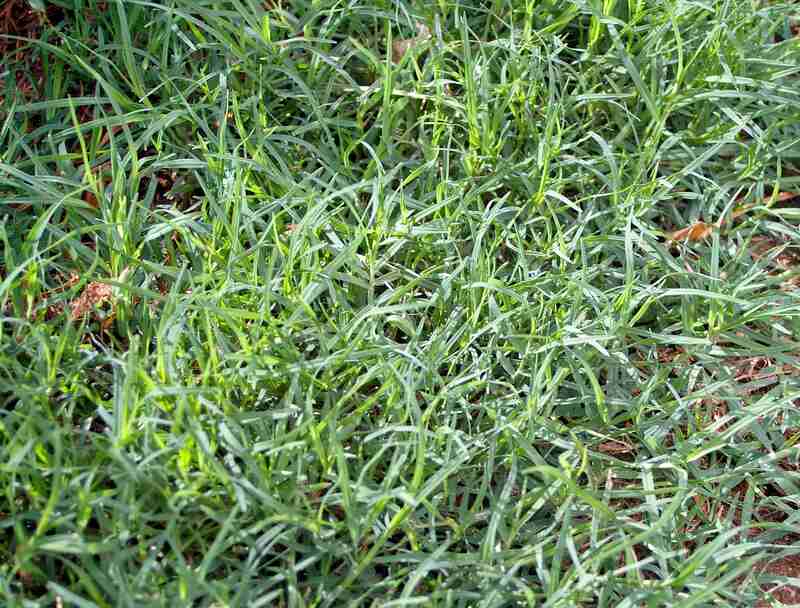
Photo Credit: Bidgee / Wikimedia Commons / CC BY-SA 3.0
A warm-season turfgrass that’s well-adapted to the hot and humid climate of South Carolina, bermudagrass boasts fast growth, which means it can quickly establish a thick and healthy turf. This grass variety is known for being drought-tolerant and able to withstand heavy foot traffic, which is why it’s a popular choice for lawns, sports fields, and golf courses in the area.
Several types of bermudagrass are available, each with its own benefits and drawbacks. For example, common bermudagrass is coarser and requires less maintenance. On the other hand, hybrid cultivars have a fine texture and refined appearance but require greater care to maintain.
Proper care and attention are crucial to maintaining a healthy and beautiful bermudagrass lawn. Regular mowing and watering are necessary, and the grass also requires fertilization and aeration to keep it in top shape. In addition, the soil type and pH can affect the grass’s health and appearance, so homeowners should consider these factors when selecting a bermudagrass variety.
Classification: Warm-season grass
Spreads by: Stolons and rhizomes
Shade tolerance: Low – some cultivars need more exposure to direct sunlight than others
Drought tolerance: High – may become dormant in extended periods of drought
Foot traffic tolerance: High
Maintenance needs: Moderate to high – requires frequent mowing, fertilization, and watering to maintain its health and appearance
Recommended mowing height: 1-2 inches – increase the mowing height during bouts of extreme heat or drought
Potential for disease: Moderate resistance – can be prone to leaf spot, spring dead spot, brown patch, and dollar spot
Potential for pests: Low resistance – mostly prone to armyworms, mole crickets, hunting billbugs, and white grubs
Soil pH: 6-6.5
Soil type: Grows in most soil types
Other notes: This grass species is notable for its extraordinary potential for quick growth, making it a favored alternative for homeowners seeking fast recovery from damage. However, this aggressive growth can have negative implications because it can cause the grass to invade and overrun other carefully manicured areas or nearby flower beds.
2. Carpetgrass
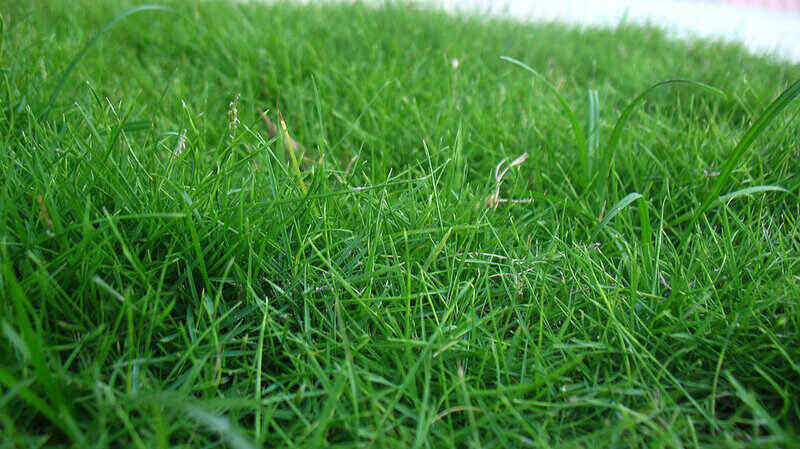
Photo Credit: Sugeesh / Wikimedia Commons / CC BY-SA 3.0
Despite its similar appearance to crabgrass, carpetgrass has distinct qualities that make it a favored choice for homeowners in the southern parts of the state who are dealing with problematic lawn conditions. Specifically, it has the ability to thrive in areas that are prone to drought and lack nutrients, which makes it an attractive option when other types of grass may struggle to survive.
In addition, carpetgrass also can grow and flourish in areas with limited sunlight, such as those surrounded by trees or other structures that block out the sun. This characteristic sets it apart from other grasses that may not be able to adapt to such conditions.
Also referred to as Louisianagrass, this type of grass is able to withstand flooding and other water-related challenges. It can tolerate standing water for prolonged periods, which makes it an excellent option for properties that are susceptible to hurricanes, heavy rainfall, and flooding or that have poor drainage.
Another benefit of carpetgrass is that it can grow without the need for additional fertilizers, pesticides, or herbicides. While some homeowners may choose to apply nitrogen to encourage growth, it is not necessary for the grass to thrive.
Classification: Warm-season grass
Spreads by: Stolons
Shade tolerance: Moderate – although St. Augustinegrass is more shade-tolerant
Drought tolerance: Moderate
Foot traffic tolerance: Low to moderate
Maintenance needs: Moderate to high – it needs weekly mowing to control its tall seed heads
Recommended mowing height: 1-2 inches
Potential for disease: Low resistance – can be susceptible to large patch
Potential for pests: Low resistance – mostly prone to white grubs and nematodes
Soil pH: 5-6
Soil type: Sandy, moist, acidic soil
Other notes: Late spring to early summer is the optimal time to reseed carpetgrass, as the warm soil temperature will promote seed germination.
3. Centipedegrass
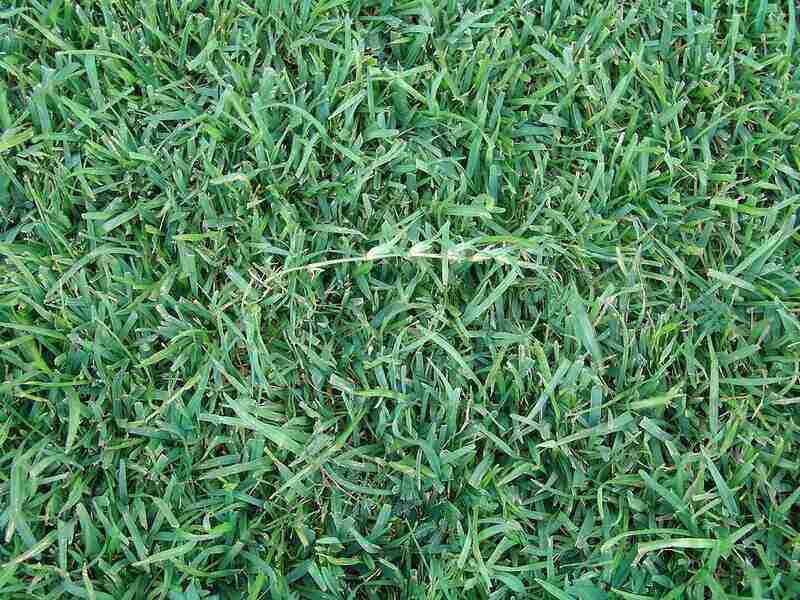
Photo Credit: James Becwar / Wikimedia Commons / CC0 1.0
Commonly found in lawns across the southern U.S., centipedegrass is known for its dense, low-growing, and carpet-like appearance. Unlike other turfgrasses, this warm-season grass requires minimal mowing, fertilizer, and water, making it a great option for low-maintenance grass. In fact, it’s known as the “lazy man’s grass.”
With a preference for partial shade and well-drained soils, centipedegrass is perfect for those who want a lawn that doesn’t need regular upkeep. Although it may not have the same deep green color as other types of grass, centipedegrass produces beautiful seed heads that become brown as they mature.
Classification: Warm-season grass
Spreads by: Stolons
Shade tolerance: Moderate – grows best in areas with the most sun exposure but can survive even with six hours of direct sunlight per day
Drought tolerance: Low to moderate – may become dormant during long periods of drought
Foot traffic tolerance: Low
Maintenance needs: Low – thrives even with minimal fertilization, mowing, and watering
Recommended mowing height: 1.5-2 inches – for shaded areas, raise the mower height by half an inch
Potential for disease: Moderate resistance – can be prone to iron chlorosis and centipedegrass decline
Potential for pests: Moderate resistance – mostly prone to ground pearl insects, nematodes, spittlebugs, sod webworms, and mole crickets
Soil pH: 5-6
Soil type: Acidic, infertile, and well-drained soils
Other notes: This grass variety is ideal for homes in central South Carolina and most of the state.
4. St. Augustinegrass
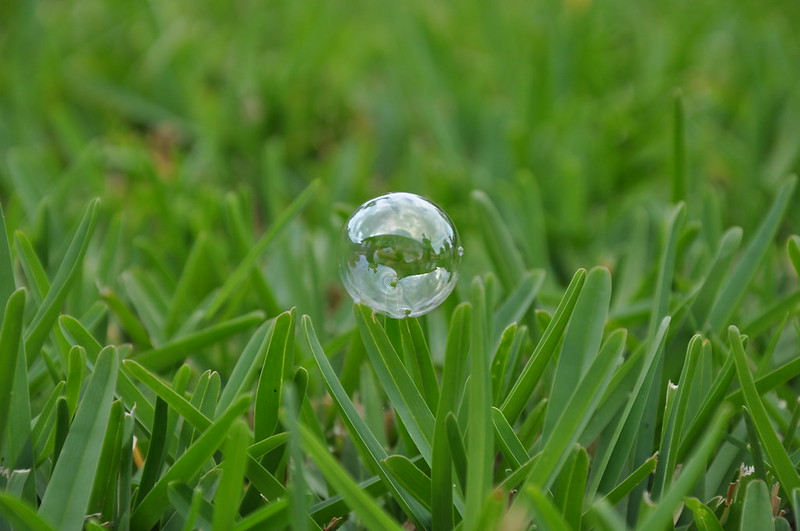
Photo Credit: Jay Morgan / Flickr / CC BY-ND 2.0
Also known as Charleston grass, St. Augustinegrass is a popular choice for lawns in coastal homes due to its ability to thrive in both sandy and clay soils. This makes it ideal for many areas along the Carolina coast. It can withstand the heat and salt that is common in these beachfront properties while also preferring warm winters and moist soil conditions.
With its flat stems and broad leaves, St. Augustinegrass creates a lush and dense turf, resulting in a beautiful blue-green lawn. Its thick growth also makes it effective at crowding out most weeds. However, this grass variety is susceptible to fungal diseases and pests like chinch bugs.
Classification: Warm-season grass
Spreads by: Stolons
Shade tolerance: Moderate – some cultivars are more shade-tolerant
Drought tolerance: Moderate
Foot traffic tolerance: Moderate
Maintenance needs: Moderate to high – needs frequent watering, mowing, and fertilization
Recommended mowing height: 2.5-4 inches (mow tall in shade, standard cultivars 3-4 inches, and dwarf cultivars 2.5-3 inches)
Potential for disease: Low to moderate resistance – mostly prone to gray leaf spot, take-all root rot, and large patch
Potential for pests: Low resistance – common pests include mole crickets, grubs, cutworms, chinch bugs, armyworms, webworms, and grass loopers
Soil pH: 6-7.5
Soil type: Prefers moist (not muddy) and moderately fertile soil but can grow in most soil types
Other notes: St. Augustinegrass is native to coastal regions and thrives in moist soils and temperate winters. But with the right growing conditions, it also can grow successfully in inland regions. Note, though, that compacted, clay soils would not be suitable for this grass variety.
5. Tall Fescue
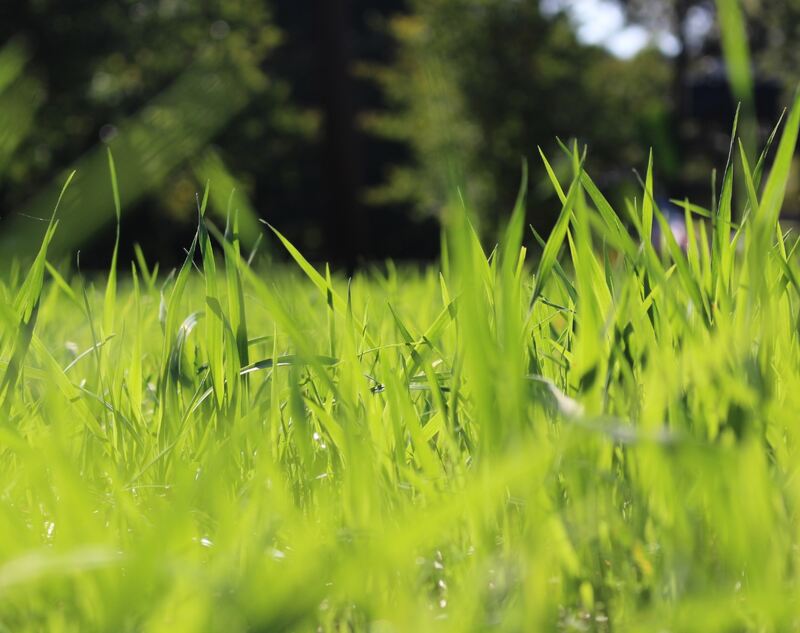
Photo Credit: Billy Lau / Canva Pro / License
With its striking, dark green color and coarse, textured appearance, this cool-season grass is ideal for lawns in the northwestern parts of the state, like Greenville. It can withstand a wide range of growing conditions, including shade, heat, and drought.
One of the benefits of tall fescue is its ability to maintain a deep root system, which allows it to maintain its green appearance. Although it requires moderate maintenance, including regular watering, fertilization, and mowing, this grass variety is known for its resilience, making it an excellent option for lawns that experience heavy foot traffic or environmental stressors.
While it may not have the same fine-textured appearance as other grass types, tall fescue’s hardiness makes it a favorite among homeowners who prioritize lawn health and longevity over aesthetics.
Classification: Cool-season grass
Spreads by: Tillers (Bunch forming)
Shade tolerance: Moderate to high
Drought tolerance: Moderate
Foot traffic tolerance: Moderate – doesn’t recover easily from wear
Maintenance needs: Moderate
Recommended mowing height: 2-4 inches (Check your cultivar and state recommendations, as many tall fescue lawns grow best when they’re mowed on the tall side.)
Potential for disease: Low to moderate resistance – can be prone to leaf spot, seedling disease, and brown patch
Potential for pests: Low to moderate resistance – can be susceptible to armyworms, cutworms, sod webworms, and grubs
Soil pH: 5.5-6.5
Soil type: Grows in most soil types but prefers clay soils
Other notes: For optimal results, apply fertilizer once during the months of September and November. Also, plant fresh grass seeds every couple of years if you wish to maintain a lush lawn and tackle any sparse or thinning spots.
6. Zoysiagrass
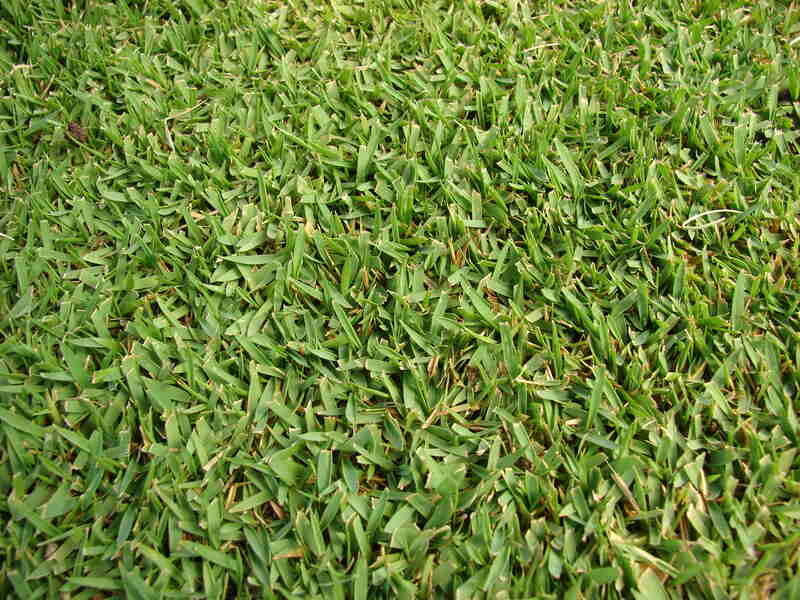
Photo Credit: Forest & Kim Starr / Wikimedia Commons / CC BY-SA 3.0
Another popular choice for lawns in South Carolina, Zoysiagrass grows well in hot and dry conditions – making it well-suited for the region’s climate. This warm-season turfgrass boasts a light green color and fine texture, creating a dense, carpet-like appearance. And because of its low to moderate maintenance needs, it’s a fantastic choice for homeowners who want a beautiful lawn without a lot of work.
One of the standout features of Zoysiagrass is its ability to spread rapidly, thanks to its rhizomes and stolons. This allows it to quickly establish a thick and resilient turf that can withstand heavy foot traffic and pet use. Also, remember that although it can tolerate some shade, it prefers direct sunlight.
While Zoysiagrass requires less maintenance than some other grass varieties, it still needs proper care and attention to remain healthy and beautiful. This includes infrequent watering, fertilization, and mowing at the appropriate height.
Classification: Warm-season grass
Spreads by: Stolons and rhizomes
Shade tolerance: Low to moderate – it needs ample sun exposure
Drought tolerance: High – although it needs supplemental watering during dry periods
Foot traffic tolerance: High
Maintenance needs: Low to moderate
Recommended mowing height: 1-2.5 inches
Potential for disease: Moderate resistance – common diseases include large patch, fairy rings, leaf spot, dollar spot, curvularia, brown patch, root decline, powdery mildew, pythium blight, rust, and spring dead spot
Potential for pests: Moderate resistance – can be prone to chinch bugs, nematodes, armyworms, hunting billbugs, grubs, sod webworms, and mole crickets
Soil pH: 6-6.5
Soil type: Grows in most soil types but prefers well-drained soils
Other notes: This grass variety is the top choice for homeowners who often organize backyard barbeques since it can withstand heavy foot traffic.
FAQ About South Carolina Grass Types
Lawns that experience heavy foot traffic require grass varieties that can withstand wear and tear. So if you’re looking for a grass type that can hold up to frequent use, both bermudagrass and Zoysiagrass are popular options. These grasses are known for their deep root systems, which help them stay resilient even when subjected to heavy foot traffic.
Caring for a lawn in a transition zone can be confusing, as it is located between the cool-season and warm-season grass regions. The best approach is to choose a grass type adaptable to both hot and cold temperatures and do the following:
• Fertilize it twice a year, in the fall and spring, with a balanced fertilizer.
• Water the lawn infrequently but deeply, allowing the soil to dry out between watering sessions.
• Aerate the soil in the fall or spring to improve drainage and nutrient absorption.
• Mow the grass to its recommended height, and leave some of the clippings to provide nutrients.
Also, monitor your lawn for pests and diseases, as the transitional climate can create favorable conditions for both. Look for signs of stress, such as discoloration or wilting, and address any issues promptly.
To have a pet-friendly lawn, choose a grass variety that can tolerate the challenges posed by pets, such as wear and tear, frequent paw traffic, and pet waste. For this purpose, many homeowners prefer tough grass varieties like bermudagrass and Zoysiagrass. These grasses are known for their ability to withstand the challenges of pet use, making them excellent candidates for a pet-friendly lawn in South Carolina.
Pick the Right Grass for Your South Carolina Landscape
Choosing the right grass for your lawn in South Carolina can be tricky. But by considering factors like moisture, sunlight, and maintenance requirements, you can find the perfect match for your specific needs. Whether you opt for the heat-tolerant bermudagrass or the resilient tall fescue, each of these grass types has unique strengths that make it a great choice for South Carolina’s unique climate and soil conditions.
By giving your lawn the proper care and attention it deserves, you can ensure it stays healthy and vibrant year-round, enhancing the beauty and value of your home.
Reach out to a local lawn care professional today, and get started on your journey toward a lush, green yard that you can be proud of.
Main Image Credit: Anderson University, South Carolina / Good Grades / Wikimedia Commons / CC BY-SA 3.0